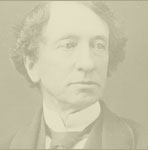

 |
OntarioIn 1615, Étienne Brûlé and Samuel de Champlain were the first Europeans to land on Canadian soil and they discovered various Aboriginal tribes: Ojibwés, Cris, Algonquins, Iroqouis, Hurons, Petuns, and Neutres. The alliances formed with the Hurons enabled the French to explore the Great Lakes region1. They built several forts such as Frontenac (Kingston) and Niagara, despite the hostility of the Iroquois who governed the region. On the eve of the Conquest of New France in 1758-1759, the British invaded the territory, but the actual colonization began with the War of Independence of the thirteen American colonies, from 1774 to 1783, with the arrival of 6000 to 10 000 United Empire Loyalists who remained faithful to England. They laid claim to their own government institutions, tenure and English laws. This led, in 1791, to the division of the territory of the province of Québec and to the creation of both Upper Canada and Lower Canada. The blockade by England and the desire of Americans for expansion, among other reasons, led the United States to declare war on England in 1812. The British army managed to defend most of the territory of Upper Canada, but in 1813, the American fleet captured York (Toronto) and burned down the city. The war ended in 1814 and the boundaries were restored to their positions at the beginning of the war. The uprisings of 1837 also spread to Upper Canada since the Reformers, led by William Lyon Mackenzie, demanded self-government and, like the Patriotes of Lower Canada, took up arms. As a result of the Rebellions of 1837 and 1838, the two colonies were united under one government in 1840. Nearly twenty-five years later, the British colonies, for various economic and political reasons, drew up a plan for confederation. The new Dominion of Canada was proclaimed in 1867. The end of the 19th century and the early the 20th century were marked by the industrialization, urbanization and development of natural resources of Ontario. The province was under the leadership of the Liberal Party from 1872 to 1935, and the Conservative Party was in power without interruption from 1905 to 1934. As opposed to French Canadians, Ontarians were in favor of Canada’s participation in World War I in 1914, and demanded conscription from the federal government of Robert Borden. He agreed to it in 1917, and conscription was also adopted in World War II. | ||||||||||
| Français |
Credits |
||